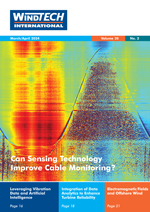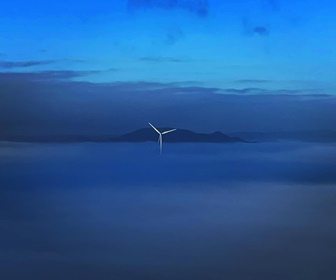Researchers from the University of Birmingham, UK, are working on new ways of preventing threats to grid stability that can result in the loss of power, equipment damage, and limited power transfer capability. With increasing reliance on renewables, the global installation of wind farms has increased rapidly. However, two major technological issues remain: power system frequency control and forced oscillations, which can cause widespread disruption across entire power grids.
Professor Xiao-Ping Zhang, Chair in Electrical Power Systems at Birmingham’s Department of Electronic, Electrical and Systems Engineering, whose research focuses on developing advanced technologies for smart grids, has developed technologies to overcome these challenges. Professor Zhang’s method quickens this recovery and eliminates the risk of frequency second dip with minimal (less than 1%) loss of wind power capture.
It was developed for use in variable-speed wind turbine systems (WTSs), which have emerged as the dominant type of wind turbine system. These systems usually operate at maximum power point tracking (MPPT) mode to extract the greatest amount of energy, and so they do not regulate their active power to support the grid when its frequency deviates from its usual value.
This new method comprises a control system that has been simulated in six scenarios with different wind speeds and wind power penetration levels. These simulations showed the system arrests the primary frequency dip, raises the frequency to a high level that is close to the settling frequency within 20 seconds, and completely eliminates the risk of the secondary frequency dip.
The system can be easily integrated into existing wind turbine control systems, and has a non-communication based central design, which means that links with other turbines and the grid are not required for it to function.
The second technology addresses the issue of forced oscillations, which occur when external disturbances produce oscillations that are close to or equal to the natural oscillations in a power system.
In the context of wind farms, they are triggered by factors such as wind shear, wind turbulence, and upstream turbine wakes and cause reduced output and equipment damage. If unchecked, they can spread to the grid, with widespread and catastrophic consequences. In the context of power grids, FOs are caused by malfunctioning equipment and can result in large oscillations thousands of miles away from the source.
Here, Professor Zhang has devised a control system that can be implemented in WTSs that can suppress and isolate forced oscillations originating either from the grid or the WTS itself.
The system, which releases or absorbs power that is opposite to the oscillating power, has been verified by simulations with constant or varying wind speeds and different wind farm locations with respect to the source of FOs on the modified two-area and IEEE 39-bus power systems (which represent the aggregation of a large number of generators) using a real-time digital simulator and a physical modelling and simulation tool.
The results of these simulations showed that the system can suppress and isolate forced oscillations originating either from the grid or the WTS itself. The loss of wind power capture was negligible, and in addition to suppressing forced oscillations, the simulations showed the system also helps dampening of the intrinsic natural oscillations.
The University of Birmingham Enterprise has filed patent applications covering the technologies and is seeking commercial partners for licencing, collaboration, or co-development.









